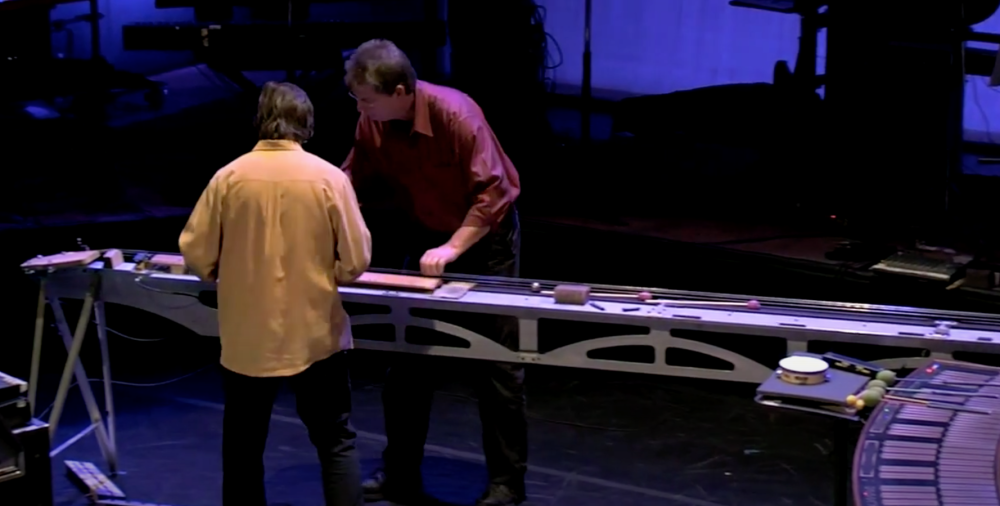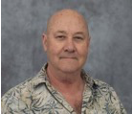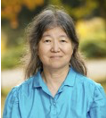WINTER QUARTER 2022
'Physics and Music', Prof. Henry Spiller and Prof. Shirley Chiang
This seminar introduces students to the basics of the fields of physics and ethnomusicology, general discussions of the physics of music sounds, and more specific investigations of the physics and meaning of musical instruments, room acoustics, and electronic reproduction. Each student in the course will conceive of, design, and build some sort of musical instrument that demonstrates their new insights into both the physics of musical sounds and the cultural significance of musical sound systems and of musical instruments as cultural artefacts. The instrument could be traditional (string, wind, or percussion), electronic, or a hybrid.
Music making is a part of human culture. Systems for organizing musical pitches often have foundations in the physics of sound. For example, the measurements of the shapes of acoustical sound waves as a function of time, such as their frequency, amplitude, and wave shape can be related directly to the musical properties of sounds such as the pitch, volume, and timbre. And the overtone series can be directly related to the perception of consonance and dissonance of musical intervals. These ideas in turn are related to various cultures’ musical systems (e.g., scales and modes). An understanding of these, and other physical properties related to music, provides insights into the development of various types of musical instruments, musical styles, and the many ways in which different cultures make music meaningful.
We will compare musical instruments associated with different cultures, along with the systems people use to classify musical instruments, and explore their acoustical properties and their cultural significance. Human perceptions of sounds will be related to reflections and echoes, including room acoustics. In addition, we will discuss methods of electrical amplification and electronic reproduction of musical sounds. The sounds generated by traditional musical instruments will be related to methods for imitating those sounds via electronic generation. These will also be related to modern methods of electronic musical composition using computers.

Associated Artists-Dresher Davel Invented Instrument Duo
Performing live on a pair of huge invented musical instruments, the duo of acclaimed composer, performer & instrument inventor Paul Dresher and percussionist-extraordinaire Joel Davel consistently generates "an exciting sense of mystery and surprise" (Portland Press Herald).
Playing the 15-foot Quadrachord or the 10-foot Hurdy Grande, and featuring Don Buchla’s magical Marimba Lumina and Lightning controller, Dresher and Davel create lush textures and rhythmically propulsive grooves that fascinate the ear and the eye. Exploring unique sound-colors amplified by live digital looping, this electro-acoustic duo creates complex sonic layers as rich as a full orchestra.
Fri, Mar 11, 2022 • 7:30pm | Sat, Mar 12, 2022 • 7:30pm Mondavi Center, UC Davis

Henry Spiller, Department of Music
Professor Spiller is an ethnomusicologist whose research focuses on Sundanese music and dance from West Java, Indonesia. He is interested particularly in investigating how individuals deploy music and dance in their personal lives to articulate ethnic, gender, and national identities. He has studied Sundanese music and dance for more than 30 years, and he has conducted fieldwork in Bandung, West Java, on many occasions.
ABC-CLIO published his first book, Gamelan: The Traditional Sounds of Indonesia, in 2004. It was named an Outstanding Academic Title by CHOICE. In 2008 Routledge released a second edition under the title Focus: Gamelan Music of Indonesia. His monograph, Erotic Triangles: Sundanese Dance and Masculinity in West Java, published by the University of Chicago Press in 2010, focuses on constructions of masculinity in Sundanese men’s improvisational dance in West Java, Indonesia. It received Honorable Mention for the 2011 Alan Merriam Prize, the Society for Ethnomusicology’s most prestigious book award.
His latest book, titled Javaphilia: American Love Affairs with Javanese Music and Dance (University of Hawai’i Press, 2015), chronicles the careers and motivations of twentieth-century North Americans who were attracted to Javanese music and dance to develop a better understanding of American orientalisms and the subtleties of identity formations. It was awarded SEM’s Bruno Nettl Prize in 2016. His current research investigates how the physical qualities of a landscape and the resources it provides shape musical styles and aesthetics. He will focus on Sundanese bamboo musical instruments as a case study.
Spiller’s articles and book chapters appear in publications such as Asian Music, Worlds of Music, Asian Theatre Journal, Ethnomusicology, and Journal of the Society for American Music, as well as many edited collections. He has written dictionary entries for standard reference works including The New Grove Dictionary of Music and Musicians and Die Musikin Geschichte und Gegenwart (MGG). He has presented papers at regional and national meetings of the Society for Ethnomusicology (SEM), the Association for Theatre Arts (ATA), the International Association for the Study of Popular Music (IASPM), and the Congress on Research in Dance (CORD).
Spiller holds a bachelor’s degree in music from UC Santa Cruz, a master’s degree in harp performance from Holy Names College, and a master’s degree and the Ph.D. in ethnomusicology from UC Berkeley. He taught gamelan at Mills College in Oakland, California, and music at California Polytechnic State University in San Luis Obispo, California. From 2002 to 2005 he served as Luce Assistant Professor in Asian Music and Culture at Kenyon College in Gambier, Ohio.
At UC Davis, Spiller teaches world music classes and graduate seminars, and directs the Department of Music’s gamelan ensemble.

Faculty: Shirley Chiang
Shirley Chiang, Department of Physics
Professor Chiang joined the faculty at UCD in 1994. Her research in the area of surface and nanophysics emphasizes high resolution microscopy of surfaces and instrumentation development. She has studied nucleation and growth phenomena for epitaxial systems of both metals on semiconductors and metals on metals, including surface alloying behavior. She is particularly well known for her work on imaging individual small molecules on metals for chemical reactions. The study of the properties of solid surfaces has important implications for the development of new materials, the fabrication of electronic devices, improvement in magnetic storage devices, and the understanding of chemical reactions at surfaces. Professor Chiang's research has had a very high impact on the field, as evidenced by over 10,000 citations to more than 100 publications.
Professor Chiang's research uses very high resolution microscopy to make real space images of solid surfaces. The scanning tunneling microscope (STM) allows images of solid surfaces down to the atomic level, and the low energy electron microscope (LEEM) permits the measurement of real-time movies of surface growth and structural phase transitions. All studies are performed in ultrahigh vacuum systems in order to carefully control the environment around the sample during the measurements. Other more conventional surface preparation and analysis techniques are also used in the laboratory, such as x-ray photoemission spectroscopy, Auger spectroscopy, low energy electron diffraction (LEED), electron beam sample heating, and argon ion sputtering.
Professor Chiang's recent research involves the measurement of the nucleation and growth of surface structures of several different metals on germanium and is funded by NSF. Recent projects in her group include the measurements of a novel surface structural phase transition of Pb on Ge(111); growth of several phases of Ag on Ge(111) and Ir on Ge(111); hopping motion of islands for Au on Ge(111), and remarkable one-dimensional growth of Ag on Ge(110). She also collaborates with theorists to model some of these materials systems.